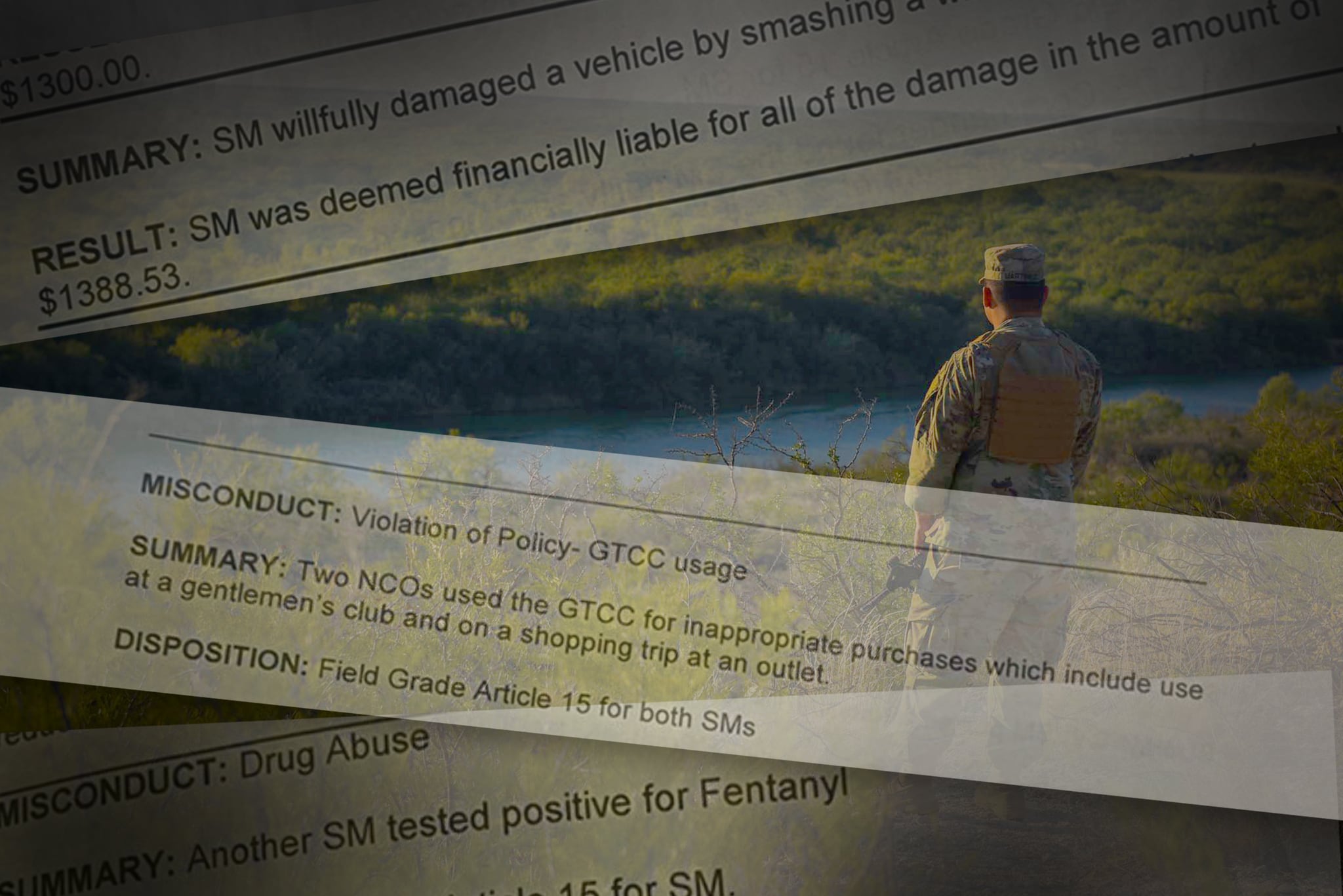On the evening of Sept. 10, a soldier deployed to the U.S.-Mexico border slid a manifesto under each door in his brigade headquarters and then slipped away.
The frustrated Army National Guardsman assigned to the 110th Maneuver Enhancement Brigade headquarters had seen enough.
Three soldiers had died in three months, the most recent in an alleged DUI just five days earlier, and more than a dozen troops from the mission had been arrested or confined for drugs, sexual assault and manslaughter.
“Someone please wave the white flag and send us all home,” the letter pleaded. “I would like to jump off a bridge headfirst into a pile of rocks after seeing the good ol’ boy system and fucked up leadership I have witnessed here.”
The unit never found the author.
The letter was provided to Army Times by another anonymous soldier, who like others for this article, spoke on condition of anonymity to discuss equipping, staffing and misconduct issues plaguing the border mission.
For much of 2021, more than 4,000 Guard personnel from 20 states helped monitor the U.S.-Mexico border alongside Customs and Border Protection personnel. The majority were part of a brigade-level ground force led by the 110th MEB known as Task Force Phoenix, a combination of 34 distinct Guard units stitched together with virtually no prior relationships, complicating an already wayward operation. Most returned home in October, when a new Guard task force took over.
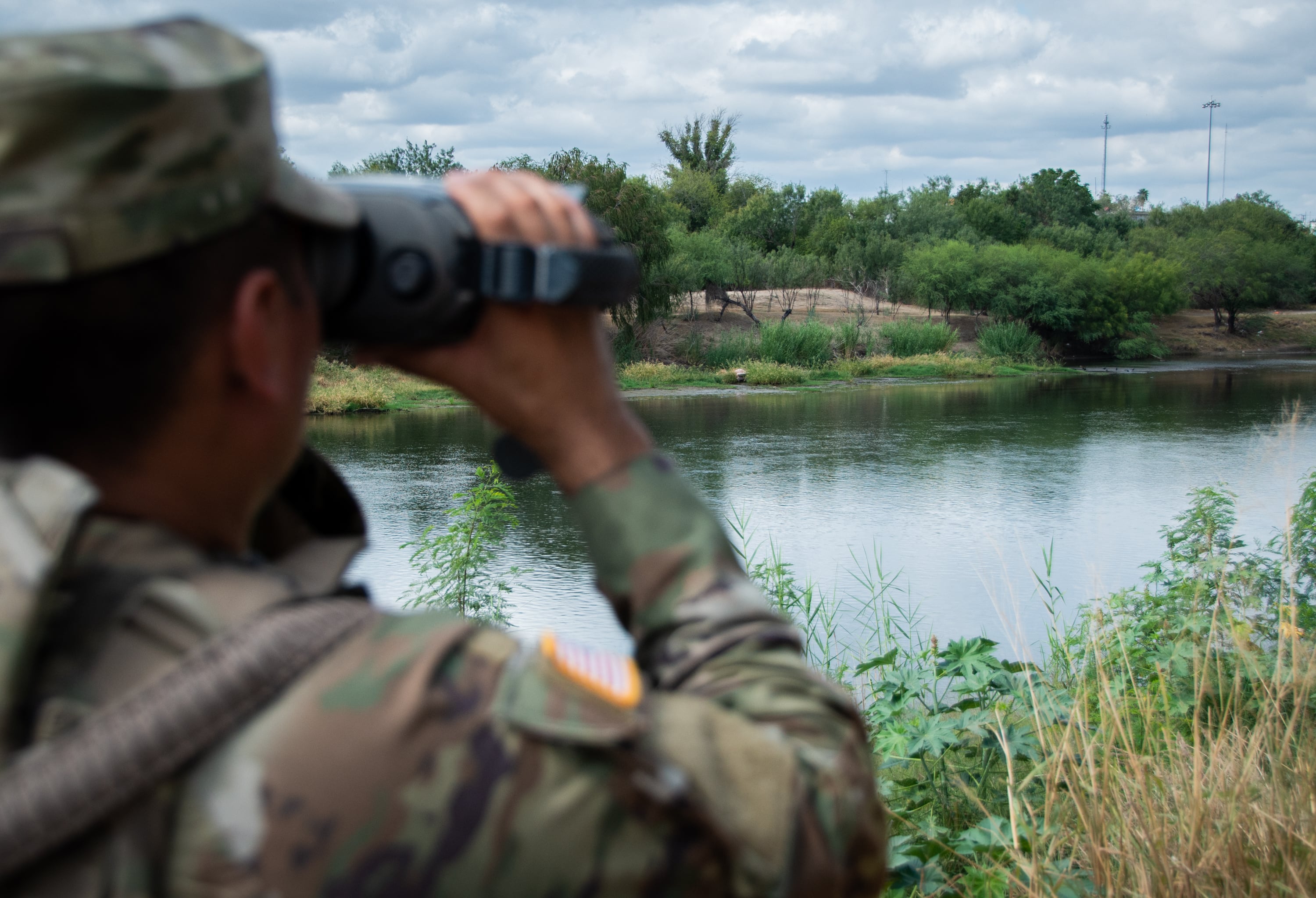
This is the story of a task force that left soldiers at isolated observation posts for hours on end without the night vision goggles they needed. They stared into the darkness and fell asleep on the job while awaiting shipments of equipment for months, and only assisted in less than one in every five apprehensions. Legal restrictions on the use of Guardsmen left them with little more than watching as a mission. Army Times interviewed seven Guard troops involved in the mission and obtained hundreds of pages of documents and audio tapes, including official incident reports and planning documents.
Among Army Times’ findings:
- When troops weren’t on duty, most were at hotels in remote locations. Alcohol and drug abuse became so widespread that senior leaders issued breathalyzers and instituted alcohol restrictions that tightened as the misconduct incidents piled up.
- Leaders initiated more than 1,200 legal actions, including nonjudicial punishments, property loss investigations, Army Regulation 15-6 investigations and more. That’s nearly one legal action for every three soldiers. At least 16 soldiers from the mission were arrested or confined for charges including drugs, sexual assault and manslaughter. During the same time period, only three soldiers in Kuwait, a comparable deployment locale with more soldiers, were arraigned for court-martial.
- Troops at the border had more than three times as many car accidents over the past year — at least 500 incidents totaling roughly $630,000 in damages — than the 147 “illegal substance seizures” they reported assisting.
- One cavalry troop from Louisiana was temporarily disbanded due to misconduct and command climate issues — an extremely rare occurrence.
- A 1,000-soldier battalion-level task force based in McAllen, Texas, had three soldiers die during the border deployment. For comparison, only three Army Guard troops died on overseas deployments in 2021, out of tens of thousands.
Perhaps nowhere were the issues more evident than in McAllen, where nearly two battalions’ worth of troops lived, led by a single understrength battalion command team that required additional help and manpower.
“We are literally the biggest threat to ourselves down here,” said one staff officer who served on the mission.
Eduardo Natividad, a spokesman for the command that oversees the federal border mission, said he would “not specifically comment” on many of Army Times’ findings because some came from documents marked as “controlled unclassified information.”
Nearly all of the documents obtained by Army Times for this story were marked CUI, which denotes protected but unclassified information.
In addition, the Joint Task Force-North spokesperson said the issues raised are “not representative of the professional and dedicated service” of the troops on the mission, and “the vast majority … do the right thing for their unit, this mission and our nation.”
‘Screwing with morale’
Two members of Congress, with whom Army Times shared its findings, said the results were shocking. Both called for Congress to further scrutinize the effort.
In an emailed statement, Rep. Andrew Clyde, R-Ga., said Congress “must ensure the folks on the front lines of this crisis have the equipment, resources, and support … that they need to properly secure our southern border — anything less is reprehensible.”
“I am fully committed to finding ways for Congress to improve conditions at the southern border,” said the retired Navy officer and member of the House Homeland Security Committee’s border security subpanel.
Clyde argued that the states, including Texas and its separate state-run border mission, “shouldn’t have to take on this immense responsibility; it’s President Biden’s job” and blamed the administration for policies “incentivizing more migrants to travel to the border.”
Rep. Ruben Gallego, D-Ariz., said in a phone interview that Congress should exercise its oversight powers to scrutinize “what actually has occurred” and whether it’s impacted “mission readiness,” despite Guard issues traditionally being left to the states.

But the issues with the mission run deeper than equipment fielding problems and political mistakes.
TF Phoenix’s predecessors, the 101st Airborne Division’s 3rd Brigade Combat Team, deployed to the border as a unified unit. They had well-worn command relationships from their daily lives in garrison.
By contrast, Guard units cobbled together under the TF Phoenix banner in October 2020, came from nearly 20 different states. Some were alerted with little notice, including units diverted from planned Iraq or Afghanistan deployments.
Gallego and some soldiers questioned why the remnants of former President Donald Trump’s border mission were even there at all.
“We could be saving billions of dollars if we actually funded [Customs and Border Protection] instead of using the Guard as a Band-Aid,” said an officer who served at the border last year. “We’re useless and CBP treats us like we’re useless. We cost the taxpayer millions of dollars in pay, benefits, per diem, hotels, [and] vehicle rentals.”
Gallego, a former Marine and a member of the House Armed Service Committee, agreed. He also highlighted the long-term costs of using Guard troops there, such as paying out increased G.I. Bill and Veterans Affairs disability benefits to those injured on the mission.
“If we want to secure the border, 100 customs officers is better than 100 National Guardsmen,” said Gallego, who also opposed a Guard border deployment during the Obama administration. “It feels warm and fuzzy to say that we have guys with camouflage down on the border, but it’s just politicians playing with people’s emotions. [The troops] don’t actually end up being effective, and you’re eroding our military capability for real threats.
“All you’re doing is, basically, taking [Guardsmen] away from their families [and] taking people from actual training,” Gallego added. “You’re screwing with readiness. You’re screwing with morale.”
Behind the border mission
The Guard’s federal border mission dates to spring 2018, when a migrant caravan fled violence in Central America.
The parade of refugees, which consisted of a few hundred asylum-seekers by the time it reached the Tijuana border crossing, prompted former President Donald Trump to authorize federal funding for state-controlled National Guard deployments to the border.
Working at the border is nothing new to the National Guard. It was Mexican rebel Francisco “Pancho” Villa’s deadly cross-border raid in 1916 that inspired Congress to pass formative legislation imposing stricter federal organization and funding for the Guard.
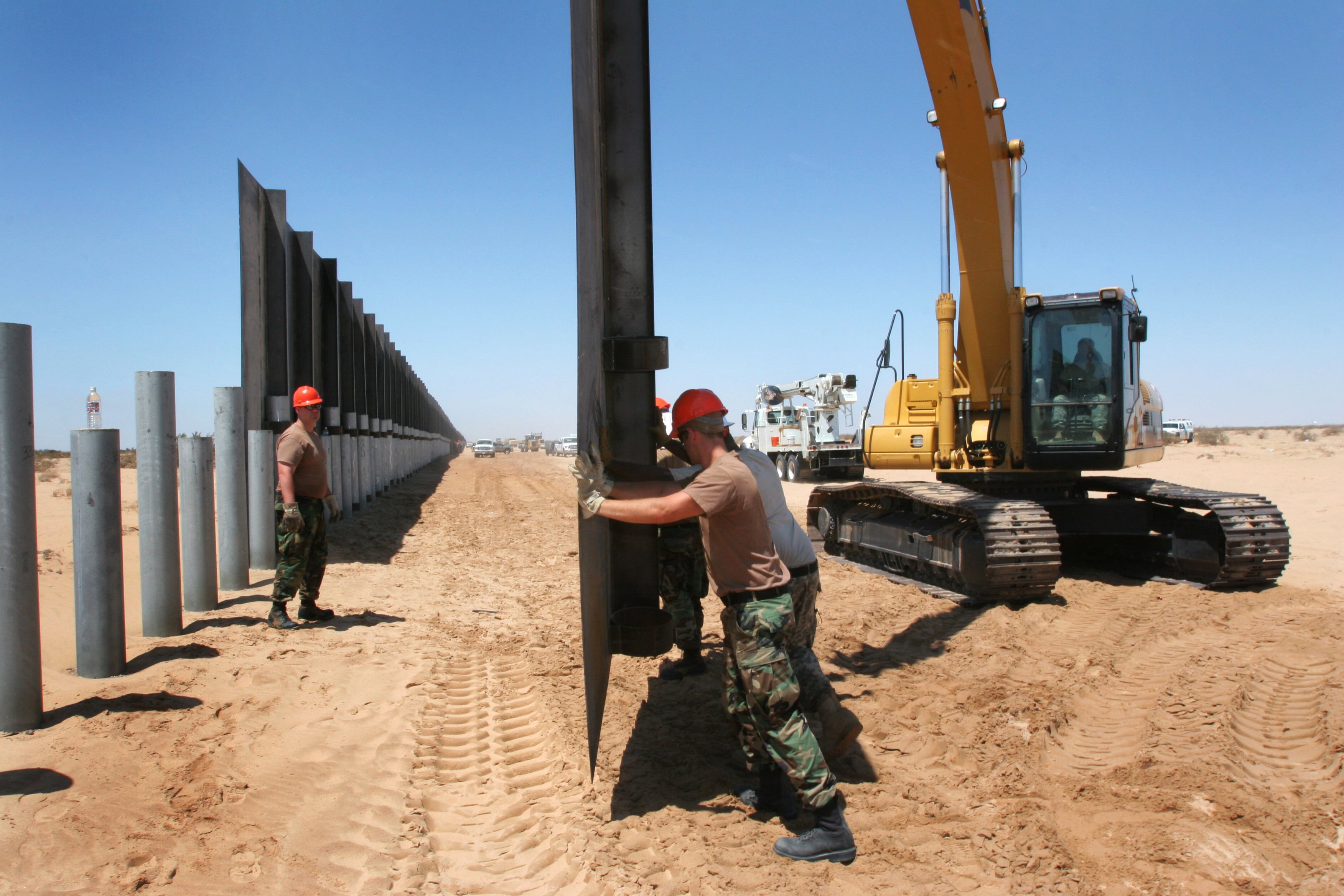
Ninety years later, George W. Bush sent 6,000 Guard troops to the border in 2006. Barack Obama deployed 1,200 in 2011.
But in recent years, border missions have become a polarizing subject, leading to greater scrutiny. In early 2021, the Government Accountability Office decried the current mission’s faulty cost estimates and tracking, which the Pentagon declined to modify. And in 2018 the head of the National Border Patrol Council called the federal mission a “colossal waste of resources.”
Initially, the Trump administration authorized and funded the mission by putting the troops in what’s known as a Title 32 status. That meant they could participate in law enforcement, if requested by civilian authorities.
President Joe Biden cancelled the authorization in February, forcing all Guard forces on the federal mission to either go home or transition to Title 10, meaning they could not participate in law enforcement due to the Posse Comitatus Act.
This key restriction differentiates the federally controlled mission from, for instance, the Texas Guard troops assigned to the rapidly expanding Operation Lone Star, which is a Texas-funded, Texas-directed border mission reporting solely to Gov. Greg Abbott. Texas officials recently gave their troops unprecedented civilian arrest authority there.
RELATED
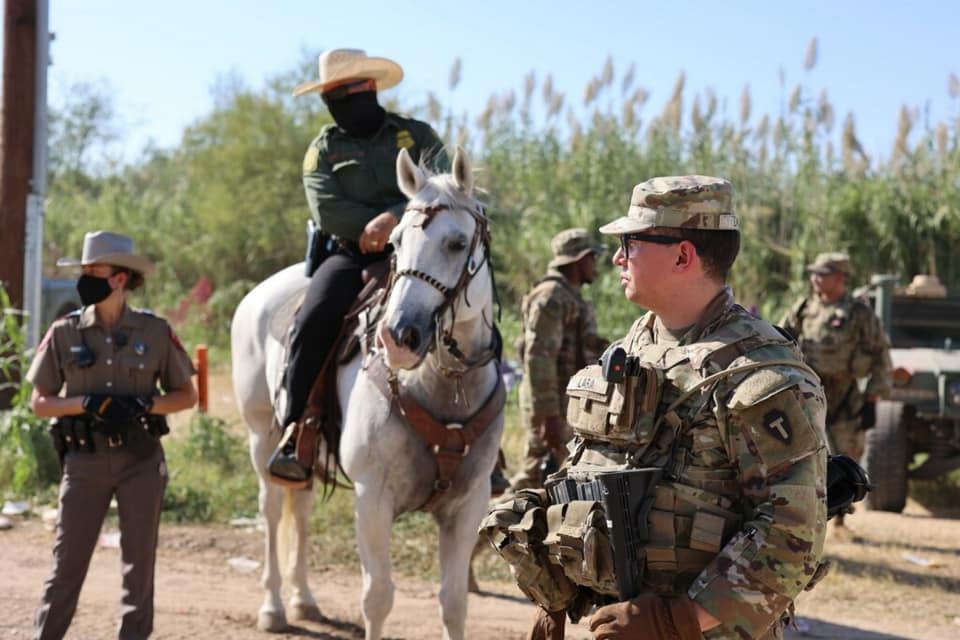
Since TF Phoenix received the Title 10 reins in October 2020, the situation at the border has deteriorated.
A record 1.66 million apprehensions were made at the border by Customs and Border Protection officers in fiscal 2021.
Amid the increased workload, reports of misconduct and deaths trickled out of the force’s nearly 2,000-mile-long area of operations. Guardsmen said they could be doing more if they were properly resourced and authorized.
Natividad, the JTF-N spokesperson, pointed at the “30 million cumulative miles traveled” by troops in support of CBP and their “heroic acts providing live saving assistance” to people in need.
Staring into the darkness
The bulk of the Title 10 troops on the border have been assigned to man 24-hour lookout sites, where soldiers watch for migrants crossing the border and then call Border Patrol agents. Some of the sites have new thermal camera trucks, but most consist of two soldiers in the front seat of a borrowed vehicle, peering through binoculars.
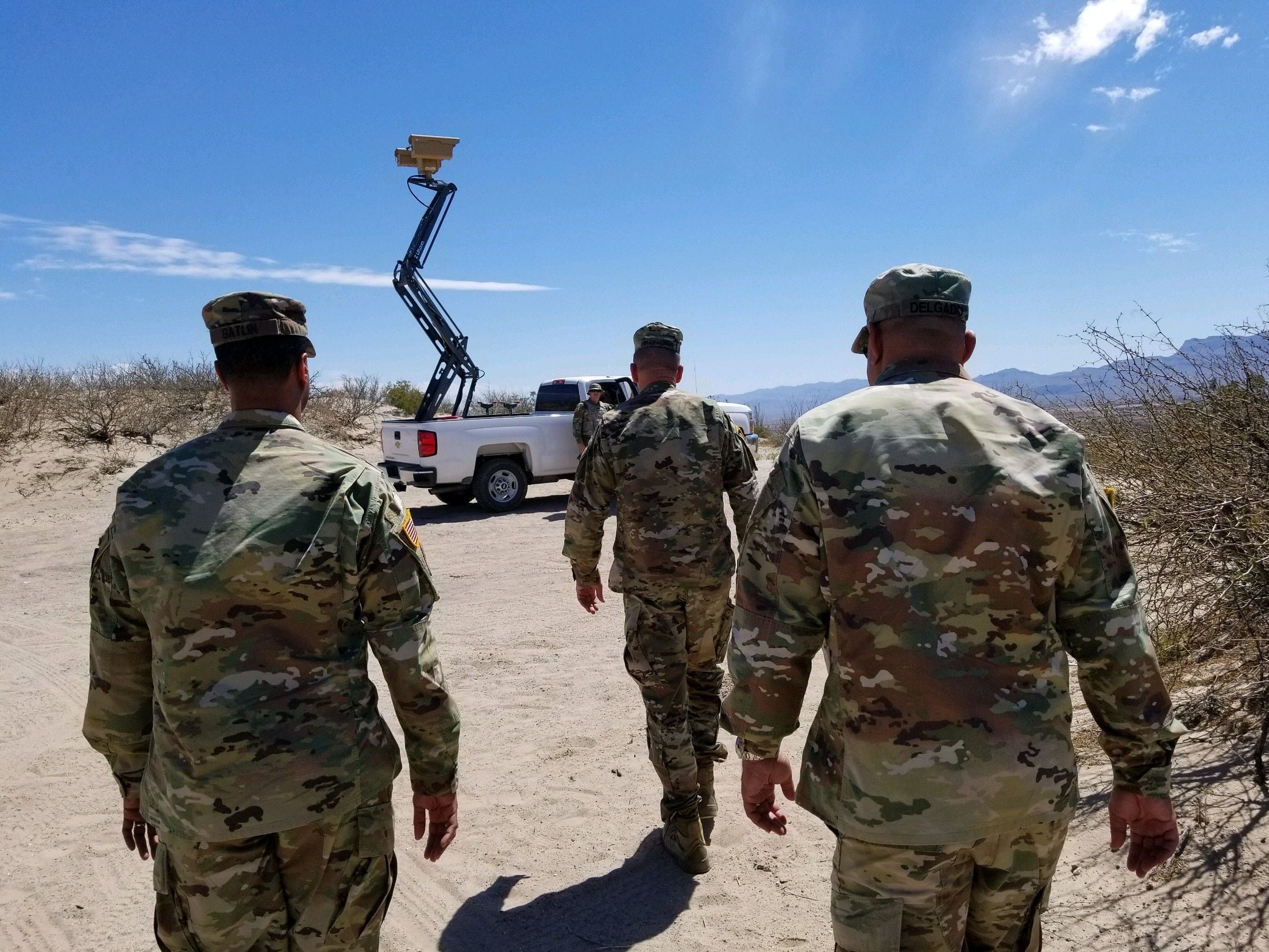
According to Guard data obtained by Army Times, the sites assisted approximately 15% of the Border Patrol’s apprehensions in fiscal 2021 — less than 250,000 of the 1.66 million, raising questions about their efficiency.
For several months after the Guard troops took over in October 2020, the night-shift troops didn’t even have night vision, documents reveal. This was despite units identifying the capability as a shortfall months before deploying, according to multiple sources. One officer said his unit “didn’t receive the NVGs until April,” nearly 10 months after requesting them in July 2020.
“[My soldiers] turned the lights on the vehicle, and stare[d] into the darkness around them,” vented the officer.
“Soldiers [were] just manning these observation posts for up to 12 hours a day, in some instances six days a week, just staring out into the desert,” said another officer. “And at night … they just stare out into the void.”
Another officer directly familiar with the equipment fielding process said the initial request for states to send the equipment was “categorically denied because those are [state] equipment and this is a federal mission.”
The underequipped soldiers repeatedly fell asleep on duty — unable to see anything and unable to do anything more than pick up a radio even when they saw something.
This included a March incident when a Fox News crew found two troops asleep in a CBP truck while six migrants were patiently waiting for arrest nearby. Many who cross the border wait for authorities to find them so they can begin the asylum request process.
At least five other soldiers faced discipline for similar incidents over the past year, according to military justice reports.
Some of the observation posts rarely saw any migrants, soldiers added. Other sites in the Laredo, Texas, sector never saw any migrants at all, the data showed. Sites near Wilcox, Arizona, only saw 21 in fiscal 2021.
Natividad acknowledged that “in some cases, leadership identified additional equipment requirements, such as NVGs and binoculars,” adding that JTF-N ultimately “received approval for these items” to be shipped from the units’ home states.
But the fielding timeline varied, based on the approval process, how long states took to ship the equipment, and getting it into the hands of the soldiers, multiple officers explained.
Low morale and alcohol problems
The malaise went beyond the mission itself, especially for the troops stationed along the Rio Grande in Texas.
Many of the Guard troops live in hotels in remote areas along the border, with few opportunities for recreation. They’re not allowed to have personal vehicles, and they’re not permitted to have unauthorized guests in their hotels, according to policy documents reviewed by Army Times.
For months, TF Phoenix was docking per diem money from soldiers who took leave or a pass outside of the border region and returned to their homes, according to multiple sources. The practice continued until the U.S. Army North inspector general found it was against regulations, said two sources with knowledge of the complaint.
“Per diem ranges from [$54 to $71] a day,” explained one staff officer. “So, if a [soldier] wanted to take some time off, [they] essentially had to pay up to $284 for a four-day pass to do so.”
The conditions may have contributed to mental health issues for some soldiers. TF Phoenix reported at least 34 cases of “suicidal ideation” during its year at the border.
In one case, a Puerto Rico National Guard soldier slipped away from her unit, caught a flight home and sought inpatient psychiatric care.
The isolation and the disincentives for taking time off also helped foster an alcohol and substance abuse crisis among some units, several sources said. One officer argued that the soldiers were flush with cash and ripe for trouble — many had no expenses and few productive outlets for their money.

Military justice reports from the task force detail how alcohol-related incidents piled up as the mission wore on. These consisted of at least two DUI car crashes, fights between NCOs, a senior NCO passed out behind the wheel and alcohol-involved sexual assaults.
Leaders grew so alarmed with the alcohol-related misconduct that in March, JTF-N ordered the border mission’s units to purchase breathalyzers to keep on hand in unit hotels. TF Phoenix instituted a new alcohol policy at that point, limiting troops to two drinks.
Three officers explained that the restrictions and breathalyzers were ineffective, calling them a “joke.”
Ultimately, the alcohol abuse continued as a hotel party culture flourished among the young troops, said four soldiers.
In June alone, at least 19 soldiers received non-judicial punishment for alcohol-related incidents, according to military justice reports.
Then two soldiers died in alcohol-related incidents between July and September.
Spc. Bernard Creque, who was assigned to the Louisiana National Guard’s D Company, 2nd Battalion, 156th Infantry Regiment, died in July when he was hit by multiple cars.
The accident happened just after 3:30 a.m. on July 10 when the soldier was attempting to cross a street in McAllen, Texas, after a meal and drinks with his colleagues ended in an argument.
And on Sept. 5, a DUI crash killed another Louisiana soldier and maimed an NCO from Georgia.
Spc. Bianca Farmer was driving a government-rented pickup truck with two other soldiers in McAllen, Texas, when she lost control of the vehicle and struck a pair of light poles, according to an incident report obtained by Army Times. The soldiers were on their way back to their hotel after a night at the bars, she told police, according to the McAllen Monitor.
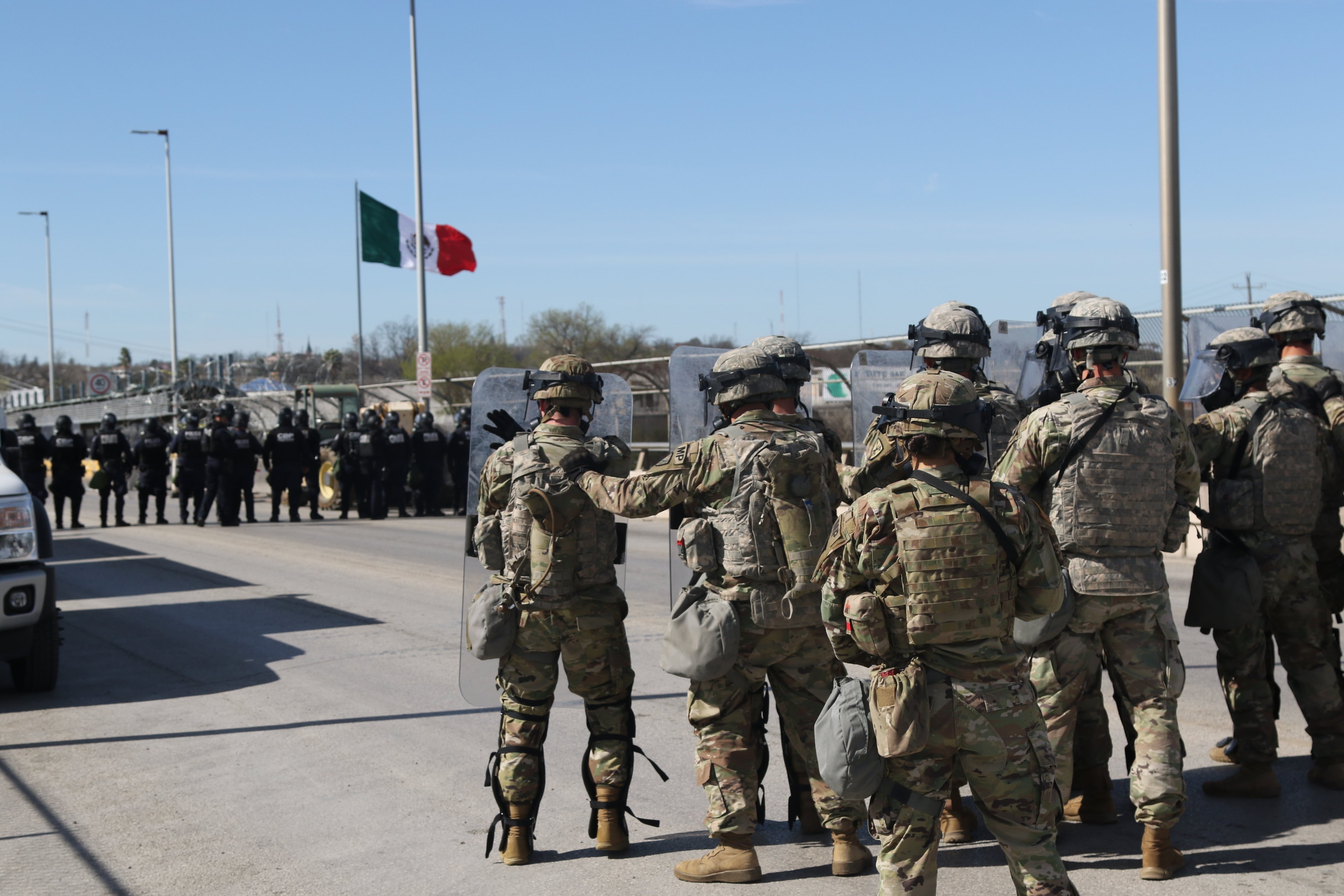
Spc. Nashyra Whitaker, who died at the scene from a head injury, and the NCO were likely not restrained or seated properly at the time of the crash, an investigator determined.
Farmer was arrested and charged with intoxicated manslaughter with a vehicle, driving while intoxicated and intoxicated assault with a vehicle.
Within hours of the accident, Col. Bradley Leonard, the TF Phoenix commander, banned alcohol for all Guard troops in his task force.
The TF Phoenix commander admitted that the command’s efforts to stem alcohol abuse were “failing” in a memo announcing the policy
Leonard called his troops’ behavior “destructive,” citing “irrevocable and fatal consequences” that put “this mission in dire risk.”
Natividad said in a September statement that Leonard’s zero-tolerance policy was “typical of those implemented for service members during deployments.” But the “typical” policy didn’t come until the deployment’s 11th month.
Bringing in drug sniffing dogs
Illicit drugs, including cocaine and fentanyl, also appeared in TF Phoenix’s drug tests, according to military justice reports and a source familiar with the unit’s drug testing.
The most notable incident occurred in September when an on-duty soldier from the Alabama National Guard allegedly tried to pick up a kilogram of cocaine to transport to a McAllen hotel that housed fellow soldiers.
According to federal court records, Spc. Derrick Sankey arrived at a Whataburger in Hidalgo, Texas, wearing his uniform and driving a marked CBP pickup truck. Undercover Homeland Security Investigations agents arrested him as soon as he accepted the cocaine from them.
Sankey’s arrest made headlines, but dozens more soldiers either tested positive for drugs or were arrested by civilian law enforcement agencies, according to the military justice blotters and incident reports.
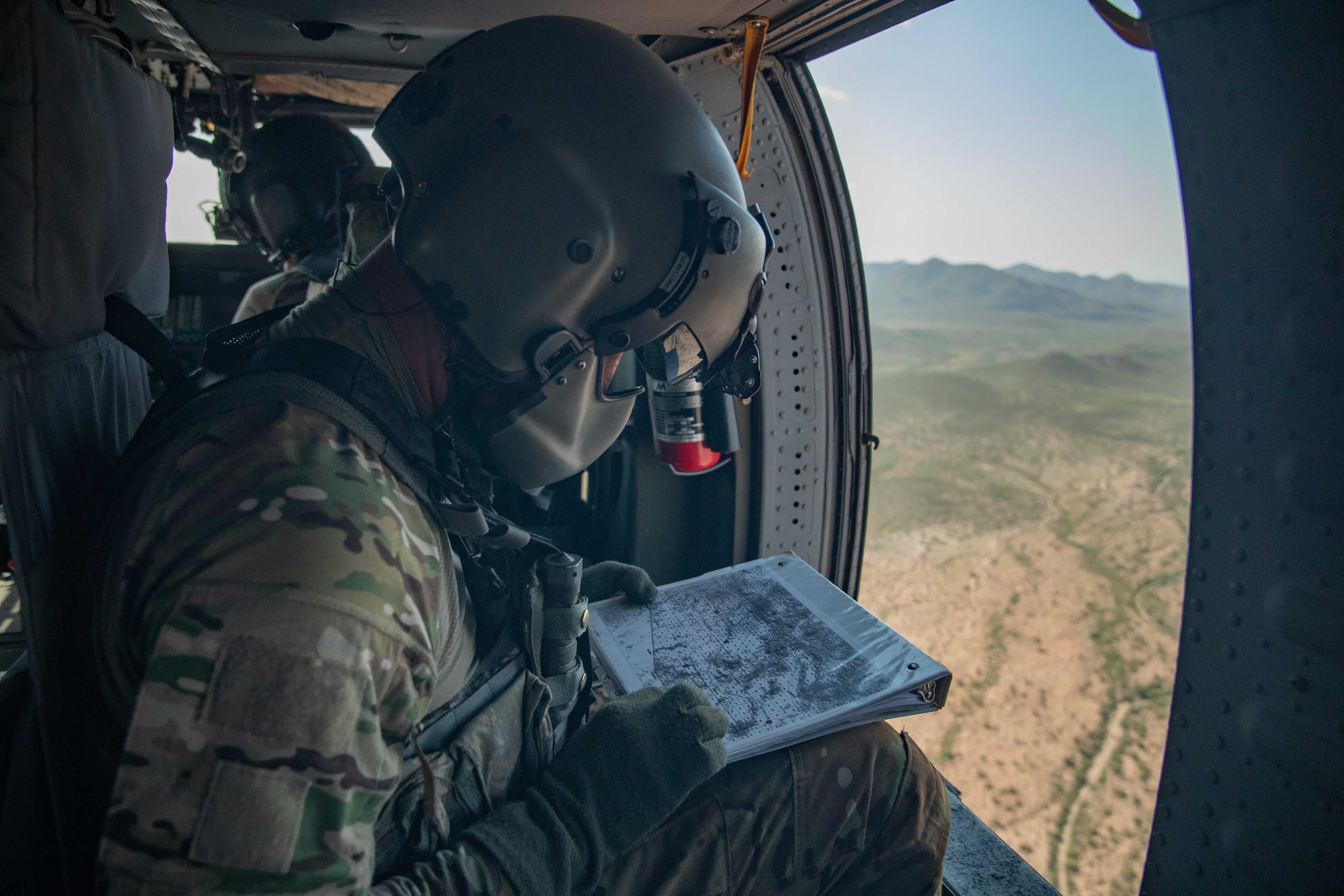
At one point, local law enforcement brought drug dogs and conducted open-air sniffs in the troops’ McAllen-area hotels, according to a source with knowledge of the search. It was unclear if any servicemembers were arrested or disciplined in connection with the searches, which were highly unusual.
Three soldiers were also arrested in May for possession of illegal narcotics, according to a task force military justice blotter.
JTF-N did not directly respond to questions about the arrests, drug use or command efforts to mitigate it.
“Given that some of these incidents remain under investigation or involve actions against specific Soldiers, Joint Task Force-North is limited in what information we can share,” Natividad said
What went wrong in McAllen?
Most of the notable misconduct incidents, and the three deaths, occurred in McAllen, Texas, under the auspices of Task Force Southeast — one of several geographically-aligned battalion-level headquarters reporting to TF Phoenix.
TF Southeast, whose headquarters is that of Alabama’s 877th Engineer Battalion, is responsible for supporting CBP along the heavily crossed Rio Grande Valley sector of the U.S.-Mexico border.
According to a source with knowledge of the mission’s force structure, the battalion headquarters was only “half-staffed.” Some key personnel, such as the medical officer, left mid-deployment.
Despite the headquarters being woefully understrength, TF Southeast’s headquarters spent most of the year responsible for eight subordinate companies and a reinforced Puerto Rican platoon. The subordinate units totaled more than 1,000 troops, stretching headquarters’ ability to effectively control personnel.
According to Army doctrine, a brigade engineer battalion typically has only five subordinate companies, plus a more robust headquarters company.
Initial plans for the mission had included a Task Force South, which would have been headquartered in Brownsville, Texas, and staffed with Puerto Rico National Guard troops. But TF South ultimately did not come to fruition, according to a source familiar with the planning, leaving TF Southeast to command the units previously slated for TF South’s control.
One source called the situation a “perfect storm” for massive discipline issues.
Toward the end of the mission, TF Southeast’s commander and senior enlisted leader — Lt. Col. Christopher Chisum and Command Sgt. Maj. Roy Sosebee — were sent home weeks before any other battalion command team.
Neither Chisum nor Sosebee responded to inquiries made via text message.
JTF-N confirmed that Chisum and Sosebee were released before other leaders, but said they “demobilized on schedule with lead elements of their task force.”
Natividad also confirmed that the TF Southeast staff did not deploy with enough resources to adequately control its troops, leading TF Phoenix to take the unusual step of establishing a permanent forward command post in McAllen. He argued that planners took appropriate action to ensure that the task force could still get the job done.
“The TF SE Battalion Staff was not understrength and overwhelmed from a mission command perspective,” said Natividad. “In fact, due to their size … the Battalion Headquarters staff was augmented by personnel from their TF. In addition, the Brigade established a forward [command post] in TF SE to help with mission command. Further, the JTF-N Regional Support Team located in their [area of operations] provided support as needed.”
But the absence of one staff officer may have contributed to the death of a soldier who died of COVID-19 in August.
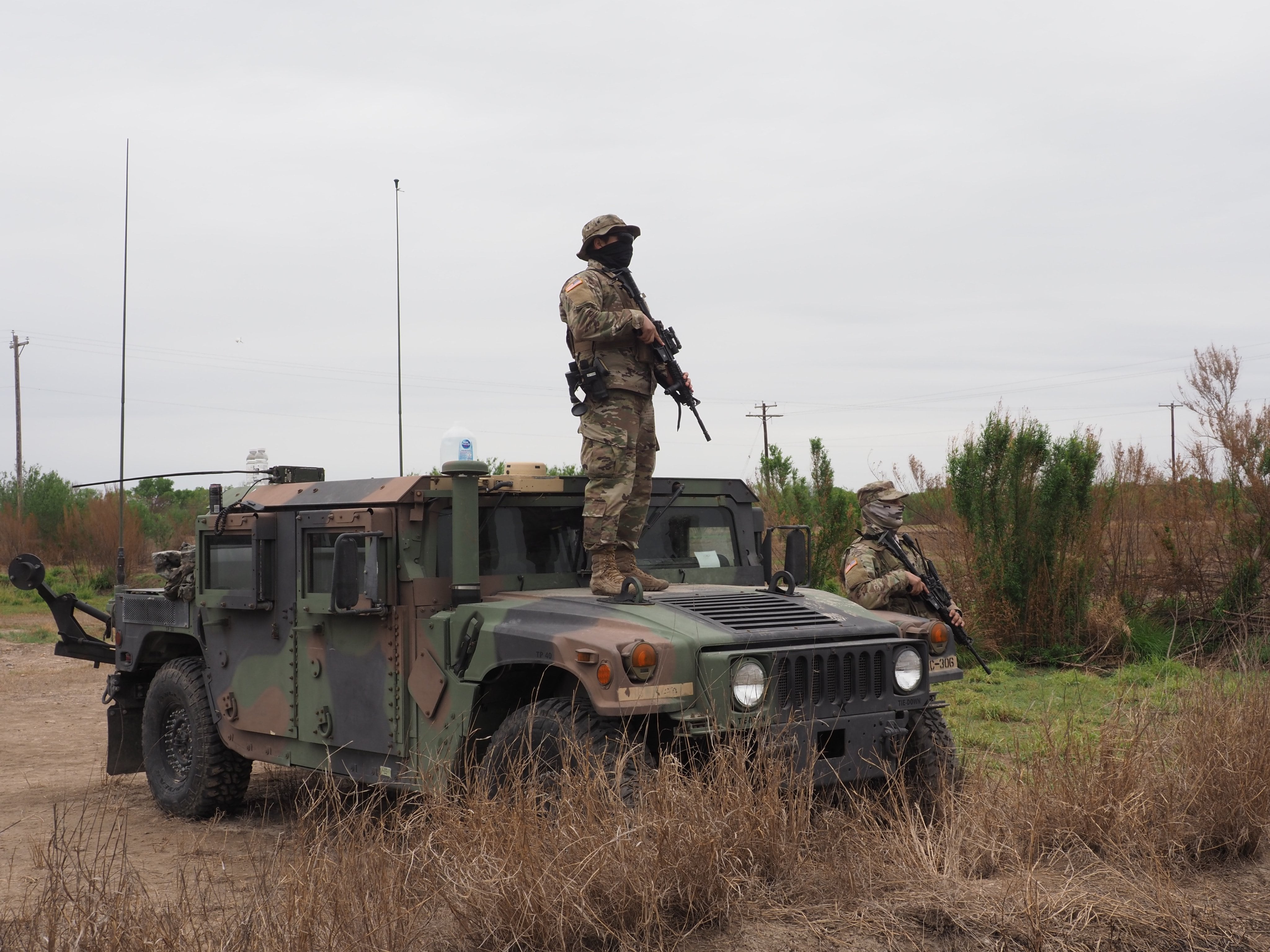
TF Southeast didn’t have a physician assistant. Theirs had gone home in April. Four months later, in August, Sgt. Kellice Armstrong, a father of two, was alone as he gasped for air, propped against his hotel bed at the Drury Inn and Suites in McAllen, sometime between the evening of Aug. 13 and midday Aug. 14, according to an incident report.
More than a week before, Armstrong had been so desperate for treatment that he drove himself to a local emergency room, which didn’t have any inpatient beds, according to the report.
His unit initially panicked, because they didn’t even know he left, according to a source with direct knowledge of the incident. He was at the hospital for 36 hours waiting for a bed before they sent him back to the hotel with medications and equipment for oxygen treatments, the report said.
Armstrong was “fully capable” of driving himself the short distance to the hospital when he first sought medical care, Natividad said.
For a period after his hospital trip, Armstrong’s condition had been improving, documents and sources said, leading him to come off the oxygen treatments.
But throughout his illness, the medical officer — the brigade physician’s assistant — was in El Paso, Texas, more than 600 miles up the Rio Grande, JTF-N confirmed. Armstrong’s military medical treatment included phone calls from the brigade physician’s assistant at Fort Bliss and daily vitals checks from his company medic.
The NCO had his “last known physical check” from the medic at 6 p.m. on Aug. 13, according to the incident report. Five minutes later, he spoke on the phone with the brigade physician assistant, who was not in McAllen.
Armstrong’s unit found him dead on his hotel room floor just after 12 p.m. the next day, the report said.
JTF-N spokesperson Natividad confirmed many of the report’s details, including that TF Southeast had no medical officer at the time of Armstrong’s death. He said privacy restrictions prevented him from commenting specifically on the NCO’s medical treatment.
The Louisiana problem
Much of TF Southeast’s trouble — and two deaths — came from the two companies sent by the Louisiana National Guard: D Company, 2nd Battalion, 156th Infantry Regiment; and A Troop, 2nd Squadron, 108th Cavalry Regiment. Both units belong to the state’s 256th Infantry Brigade Combat Team.
These units were filled with soldiers who weren’t selected to go on the brigade’s deployment to Iraq, according to multiple officers familiar with the manning of the two units.
As a result, both companies had a severe shortage of qualified NCOs and included troops from units throughout Louisiana who had not worked together before the border mission.
“Without the proper amount of NCOs, it made it harder to keep them from doing dumb shit,” explained one officer. “[The units] had a lot of soldiers that shouldn’t have been there.”
The cavalry troop faced such widespread issues with sexual harassment, discipline and command climate that it was temporarily disbanded in May, its soldiers folded into other units across TF Southeast, according to a memo and five sources.
JTF-N “does not tolerate” those types of misconduct, said Natividad. He reiterated leadership’s commitment to investigating every “allegation of misconduct” and encouraging dialogue between soldiers and leaders through channels like open-door policies.
After the death of Whitaker, the soldier who died in the DUI crash, both companies of Louisiana Guard troops were sent home more than a month ahead of schedule.
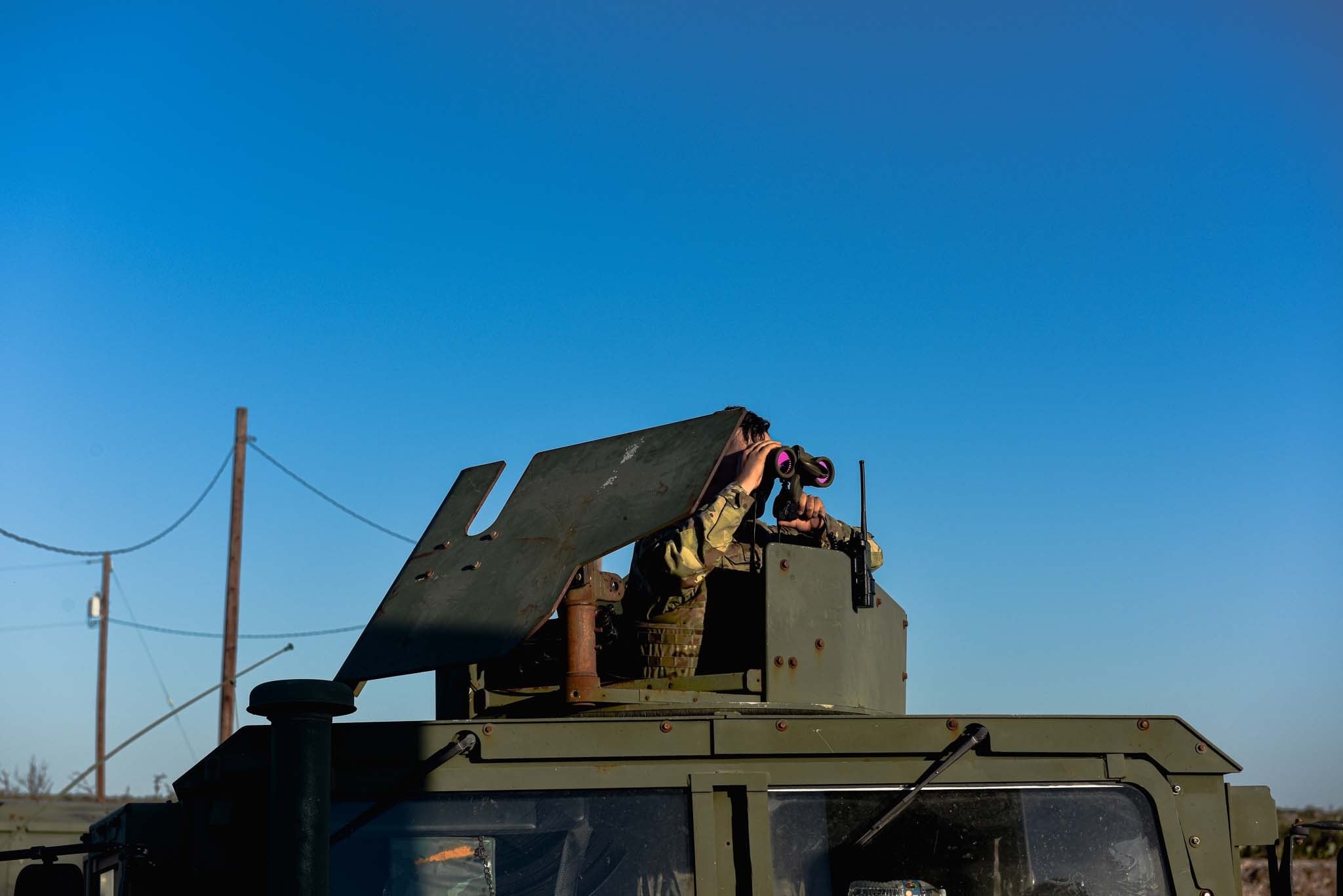
The Louisiana National Guard denied any link between the deaths and the early return home, with spokesperson Air Force Col. Jennifer Mumme attributing it to “a routine operational assessment …based on their [parent unit’s Iraq] redeployment window.”
In recent weeks, TF Phoenix has been replaced by a new crop of Guardsmen who will continue supporting CBP until at least the end of fiscal 2022. The new coordinating headquarters, Task Force Legion, is from the Kentucky Army National Guard’s 149th Maneuver Enhancement Brigade
The officer who commanded TF Phoenix from October 2020 until February, then-Col. Martin Clay, was promoted to brigadier general in May.
“The 4,000 National Guard men and women assigned to this mission during FY21 made a positive difference to the security of this nation,” said Natividad. “We are proud of them.”
DoD authorized 3,000 troops to remain on the mission until Oct. 1, 2022, though it’s not yet clear whether the federally funded border mission will continue beyond that point.
One officer, though, said he wants to see the mission end, though he won’t get his hopes up.
“It’s much easier to fund 3,500 troops to go do fuck-all in the desert than it is to pass [immigration reform].”
Davis Winkie covers the Army for Military Times. He studied history at Vanderbilt and UNC-Chapel Hill, and served five years in the Army Guard. His investigations earned the Society of Professional Journalists' 2023 Sunshine Award and consecutive Military Reporters and Editors honors, among others. Davis was also a 2022 Livingston Awards finalist.
